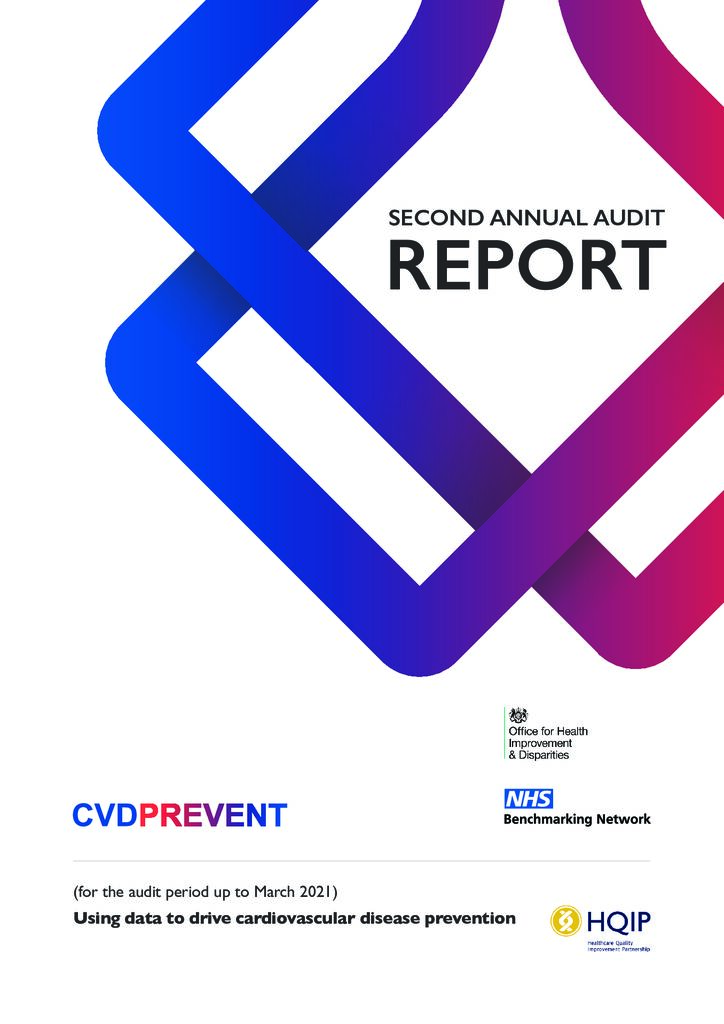CVDPREVENT Second Annual Report
The CVDPREVENT (cardiovascular disease prevention) audit has published its second annual report. Based on the analysis of GP recorded data up to March 2021, the report aims to understand the variation in identification, diagnosis and management of people at risk of CVD across dimensions of potential health inequity including deprivation, age, sex and ethnicity, as well as the impact of the COVID-19 pandemic.
For this report, the audit saw an increase in coverage of GP practices to 93% from 79% when compared with the pre-pandemic baseline, covering 93% of England’s population. Key findings include:
- The biggest disruption to diagnosis/recording of CVD risk factors occurred in the first lockdown period, however, there was an increase in the number of new diagnoses per month over the rest of the year.
- Blood pressure (BP) monitoring has been affected by the pandemic, however, there was only small variation within the inequality breakdowns for BP monitoring compared with the pre-pandemic baseline (suggesting that no particular group missed out on recorded BP monitoring more than any other group).
- There has been little disruption to the prescription indicators. Anticoagulation for people with high-risk atrial fibrillation (AF) and lipid lowering therapy levels for people with existing CVD and chronic kidney disease (CKD) remain broadly similar in this latest round of data, compared the pre-pandemic baseline.
The report goes on to make a number of recommendations, including a call for Integrated Care Systems (ICS) to work with primary care (as part of their response to Core20PLUS5) to review the health inequalities dimensions within the CVDPREVENT Data and Improvement Tool to understand where they are outlying on the CVDPREVENT hypertension identification and management indicators. Building on the shift to population health, ICSs should allocate resources to support primary care to identify and review patient cohorts where case finding and interventions to optimise BP show the greatest gap compared to national performance.
Read the full report: You can read the report by clicking on the link below.
Stay-up-to-date: For notifications of future reports from HQIP, sign up to our mailing list.


